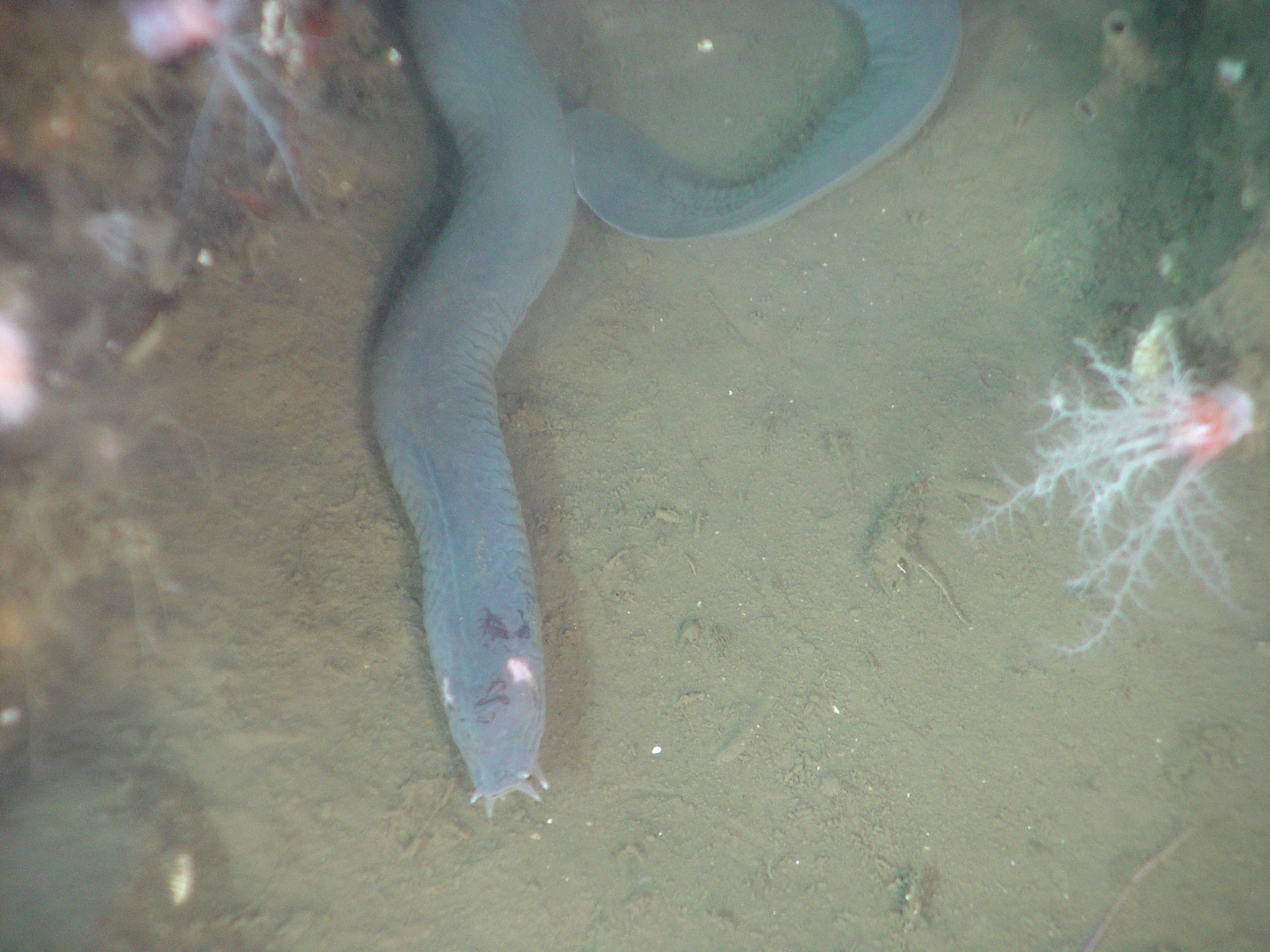
Living hagfish

This image shows the remains of a hagfish after 20 days of decay. Only the head skeleton, notochord and parts of the liver are left.
Paleontologists examine fossil remains to discover clues about long-extinct organisms. Unfortunately, such creatures were mostly soft-bodied and left few fossils behind. Those traces that have been found are difficult to identify. In order to provide a framework for interpreting these remains, Robert Sansom, Sarah Gabbott and Mark Purnell of the University of Leicester have been studying the decay of modern fishes.
In particular, the team has been leaving out carcasses of lampreys and hagfishes, both cartilaginous jawless fishes. As the fish decompose, their bodies take on distinctive appearances (and odors, apparently). The scientists can then compare those remnants to the fossils of ancient soft-bodied animals. The data is already improving the reconstructions of early vertebrate fossils.
According to Gabbott:
Our macabre experiments are grisly and smelly but they have revealed, for the first time, what characteristic vertebrate features look like when they are partially decomposed.
No comments:
Post a Comment